IB Biology HL (HIGHER level)- 2024 – Practice Questions- All Topics
Topic 1.4 Introduction to cells
Topic 1 Weightage : 8 %
All Questions for Topic 1.4 –Types of Transport, Simple Diffusion, Osmosis, Osmolarity, Facilitated Diffusion, Active Transport, Vesicular Transport, Bulk Transport, Cotransport, Kidney Dialysis
Question
The images refer to question below . They show samples of red blood cells that were placed in different concentrations of salt solutions.
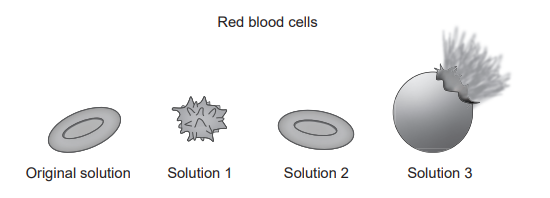
Which process explains the observations shown in the images?
Active transport
Exocytosis
Facilitated diffusion
Osmosis
▶️Answer/Explanation
Ans: D
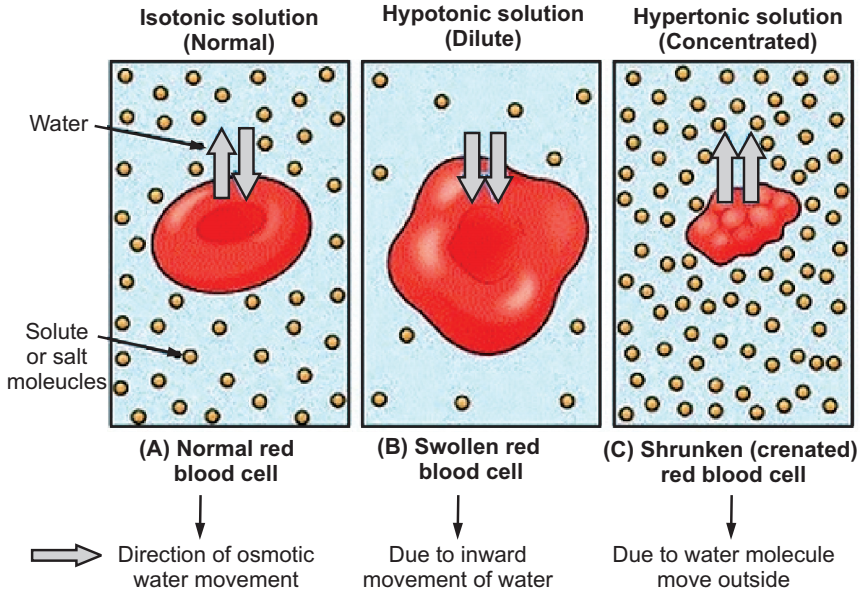
RBC stands for red blood cell, which is a type of cell that carries oxygen in the blood. Saline solution is a mixture of salt and water that has the same concentration as the body fluids.When RBCs are placed in a saline solution, they may undergo changes depending on the concentration of the solution. If the saline solution has a lower concentration than the RBCs, it is called a hypotonic solution. In this case, water will move from the solution into the RBCs by a process called osmosis, causing them to swell and possibly burst. This is called hemolysis.If the saline solution has a higher concentration than the RBCs, it is called a hypertonic solution. In this case, water will move from the RBCs into the solution by osmosis, causing them to shrink and lose their normal shape. This is called crenation.If the saline solution has the same concentration as the RBCs, it is called an isotonic solution. In this case, there will be no net movement of water between the RBCs and the solution, and the RBCs will remain unchanged.
Question
By which process do potassium ions move through potassium channels in axons?
Active transport
Exocytosis
Facilitated diffusion
Simple diffusion
▶️Answer/Explanation
Ans: C
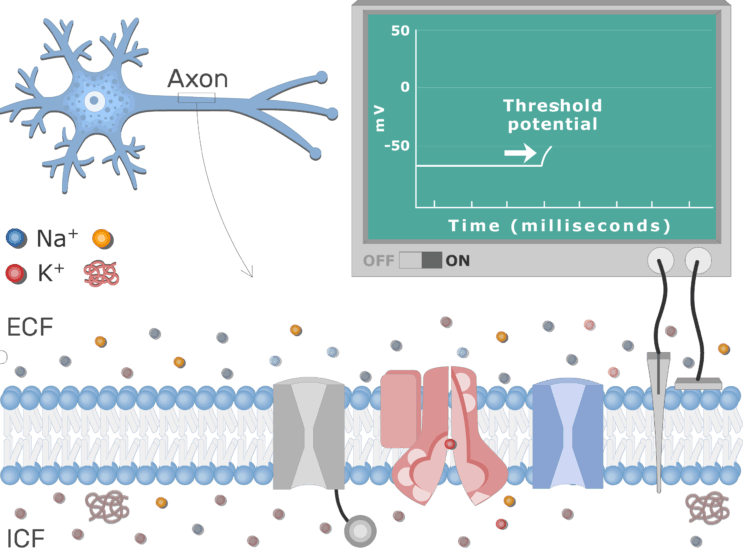
Facilitated diffusion of potassium is a process by which potassium ions move through potassium channels in axons. Potassium channels are integral proteins with a hydrophilic inner pore that allow potassium ions to pass through. This process does not require energy and is driven by the concentration gradient of potassium ions across the membrane. Facilitated diffusion of potassium is important for the transmission of electrical impulses by nerve cells.
The diagram is a model of one type of movement across a membrane.
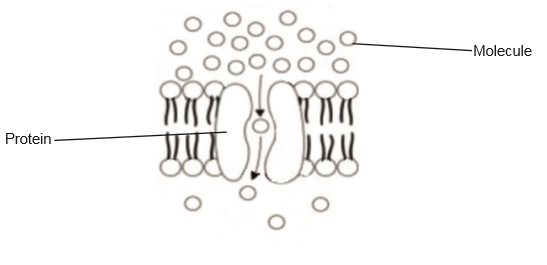
What is this type of movement?
A. Simple diffusion
B. Facilitated diffusion
C. Osmosis
D. Active transport
▶️Answer/Explanation
Markscheme
B
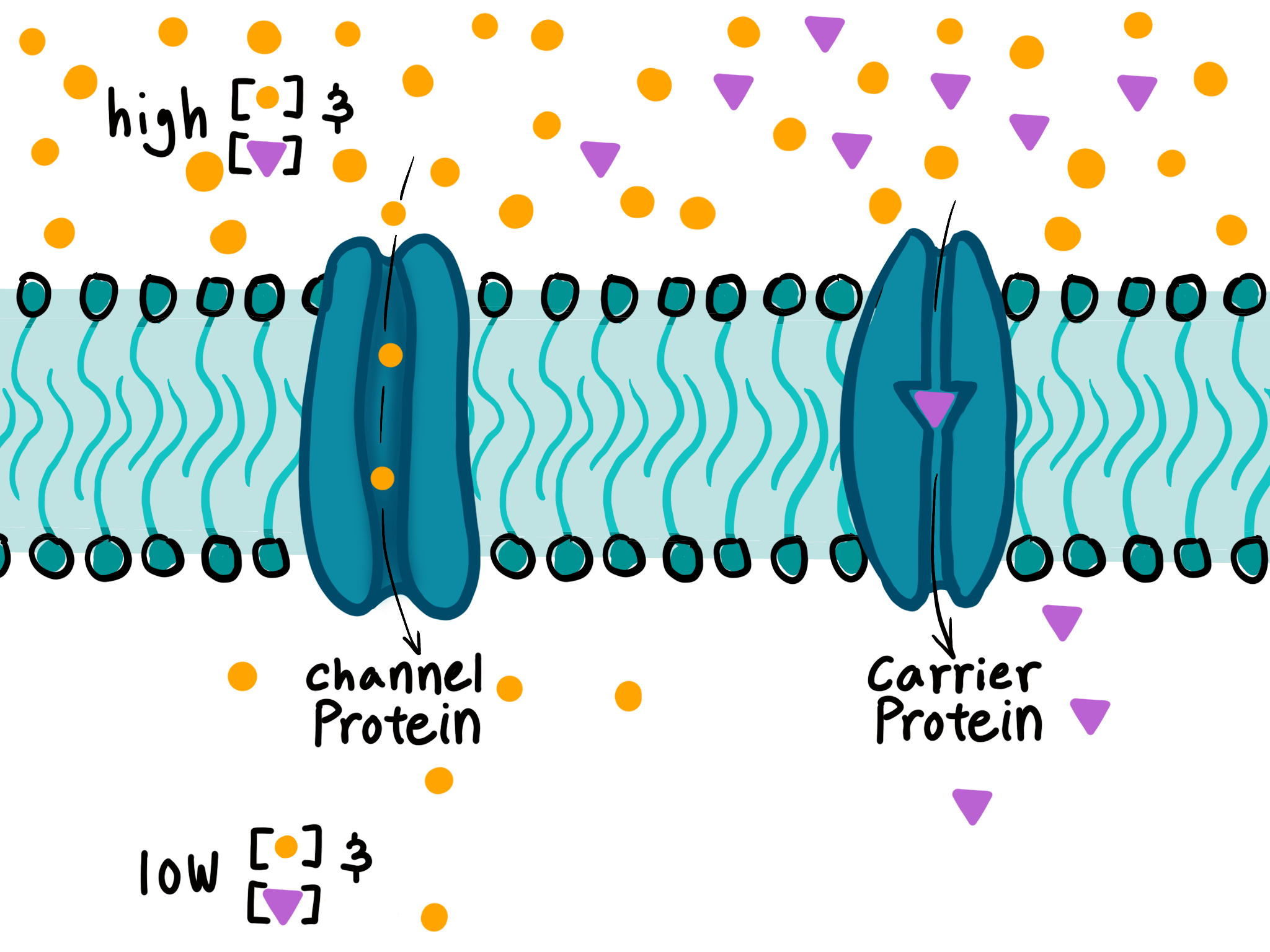
Facilitated diffusion is a type of passive transport that allows substances to move across a cell membrane with the help of transport proteins. It is a selective process, meaning that only certain molecules and ions can pass through the membrane. This process does not require energy from ATP hydrolysis.
What features of a cell favour efficient removal of waste products?
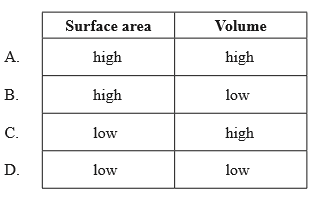
▶️Answer/Explanation
Markscheme
B
The surface area to volume ratio (SA:V) of a cell affects how efficiently it can remove waste products.
The higher the SA:V, the easier it is for the cell to exchange substances with its environment. This is because a high SA:V means that the cell has more surface area relative to its volume, so it can diffuse more substances across its membrane per unit of time.
A low SA:V means that the cell has less surface area relative to its volume, so it can diffuse fewer substances across its membrane per unit of time. This can limit the cell size, because if the cell grows too large, its metabolic rate may exceed the rate of exchange of vital materials and wastes. The cell may not be able to get enough nutrients and oxygen, or get rid of carbon dioxide and waste materials fast enough.
Therefore, a high SA:V can favor efficient removal of waste products by allowing faster diffusion across the cell membrane. A low SA:V can hinder efficient removal of waste products by slowing down diffusion across the cell membrane.